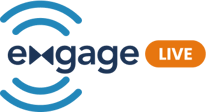Did you know that 74% of company leaders are currently using or plan to implement a permanent hybrid work model? Meanwhile, 94% of employees would stay at a company longer if it invested in their learning and development.
As we navigate both the flexibility and challenges of the hybrid work environment, mastering the art of effective employee training has never been more critical. Written by Josie Belfer, this article explores how many of these unique challenges can be solved through these five top tips for companies aiming to strike the right balance between the in-person and remote aspects of hybrid work and training.
1. Embrace a Blended Learning Approach
The heart of successful hybrid work and training lies in a blended learning approach. What is blended learning? This strategy combines the best of both worlds: in-person interaction for hands-on experience and remote learning for flexibility and convenience.
To begin implementing a blended learning approach in your training program, leverage in-person workshops or seminars to facilitate networking and hands-on learning. Pair this with your online tools to provide team-building touch points and reinforcement of training, accessible from anywhere. This approach ensures that employees receive comprehensive training while accommodating diverse learning preferences.
Tips for Incorporating Blended Learning:
• Document Training Best Practices: Outline best practices for your program that detail when to use in-person training and when to leverage online modules. Schedule activities that require a focused and distraction-free environment for remote days. This will save time for networking and team-building on in-person days.
• Conduct a Tool Audit: List all the online tools and platforms you currently have and identify what's missing to support a blended learning environment. For example, do you need a tool that supports virtual collaboration when your team is remote, or better equipment to display presentations when your team is in-person?
• Pilot Test Your Blended Learning Approach: Before rolling it out company-wide, pilot your blended learning program with a small group to gather initial feedback. You might find that a session you scheduled for in-person is more effective online, or get other valuable insights directly from your team that you didn't expect.
2. Invest in Technology and Infrastructure
For hybrid work and training to thrive, robust technological infrastructure is non-negotiable. Companies need to provide a seamless communication experience leveraging tools such as video conferencing platforms and collaborative software.
Technology should enhance engagement, not hinder it. Choose technology that provides stakeholders with relevant data for real time and holistic measurements. Regularly assess your tech stack to guarantee it aligns with the evolving needs of your hybrid workforce.
Getting Started With New Technology:
• Conduct a Needs Assessment: Send out a virtual survey to your employees to understand their technological needs and challenges. That way, you can prioritize top pain points and meet key needs with any new technology you adopt.
• Set a Budget: Decide on a budget for the necessary upgrades or new tools, and compare various options within that budget to see what best meets the needs of your company.
• Schedule Training and Onboarding: Once any new tools are acquired, set aside time for training sessions so that employees are comfortable using them. Providing time for free exploration of the tools before your training session can help your team come with questions ready.
3. Prioritize Clear Communication
Communication becomes a cornerstone in hybrid work setups. Establish transparent guidelines that outline when in-person attendance is required and when remote work is acceptable. This clarity ensures that all employees understand expectations.
When it comes to training, provide comprehensive schedules well in advance. This allows employees to plan their time effectively and ensures that remote participants can attend vital in-person training sessions. Foster open channels for feedback and address concerns promptly to create a sense of inclusivity.
How to Focus on Communication Best Practices:
• Create a Detailed Guideline Document: Create a thorough document to share with your team that outlines remote and in-person work and training expectations. This allows for easy reference when employees have questions and company-wide alignment from the start.
• Establish Communication Channels: Set up dedicated channels on virtual communication platforms specifically for training and work updates, and post information regularly to keep your team current.
• Encourage Regular Feedback Loops: Plan monthly or quarterly meetings where employees can provide feedback on communication effectiveness, plus suggestions for improvement.
4. Create Customized Training Paths
Every employee brings a unique set of skills and requirements to the table. Tailoring your training paths for different roles or skill levels is crucial. Utilize your online education platform to offer a variety of courses catering to diverse needs. Create learning modules that incorporate a mix of live synchronous classrooms, asynchronous collaborative work, and self-paced learning.
Customization not only empowers employees to acquire relevant skills but also enhances engagement by acknowledging individual growth trajectories.
Tips for Personalizing Hybrid Training:
• Identify Needs Using Skills Assessments: Have each employee take a skills assessment to identify their specific training needs. This will allow you to prioritize the most impactful training opportunities, both at an individual employee level and company-wide.
• Design Custom Learning Pathways: Use the assessment results to customize your training paths and courses to meet the specific needs of your employees and company.
• Create Check-in Points: Schedule regular check-ins with your team to track progress and adjust training pathways as necessary.
5. Measure and Adapt Regularly
Hybrid work and training environments are dynamic by nature. Regularly measure the effectiveness of your training initiatives and solicit feedback from employees. Use data from your tech stack to foster insights to refine your training strategy, adapting to the changing needs of your workforce. Pay attention to participation rates, engagement metrics, and skill acquisition.
This iterative process ensures that your training program remains aligned with both in-person and remote aspects of your hybrid work model.
How to Measure Your Training ROI:
• Set KPIs Early: Before rolling out your training program, set Key Performance Indicators (KPIs) to measure its effectiveness on the metrics that are the most important for your team. Use data and analytics to see where your training is having the greatest impact.
• Collect Feedback Often: Use online surveys or one-on-one interviews to get feedback from employees about the training program, tools, and materials.
• Review and Revise: Make it a point to review the training program and its effectiveness at least once a quarter, adapting the strategy as needed based on your KPIs and employee feedback.
Holistic Strategies for Hybrid Work and Training
Embracing hybrid work requires a holistic approach that takes into account the unique needs of both in-person and remote employees. By implementing a blended learning strategy, investing in technology, prioritizing clear communication, offering customized training paths, and consistently measuring and adapting, companies can strike the delicate balance needed to thrive in this new era of work.
Through thoughtful planning and continuous improvement, your organization can lead the way in successfully navigating the hybrid work landscape while fostering professional growth through effective training.
 Interested in continuing the conversation on remote and hybrid work? Join our upcoming EngageLIVE on September 12. Dana Sednek, the former Intuit Head of Learning Enablement and renowned expert in digital transformation, will discuss the truths and debunk the myths surrounding the ever-evolving work culture and environment.
Interested in continuing the conversation on remote and hybrid work? Join our upcoming EngageLIVE on September 12. Dana Sednek, the former Intuit Head of Learning Enablement and renowned expert in digital transformation, will discuss the truths and debunk the myths surrounding the ever-evolving work culture and environment.


